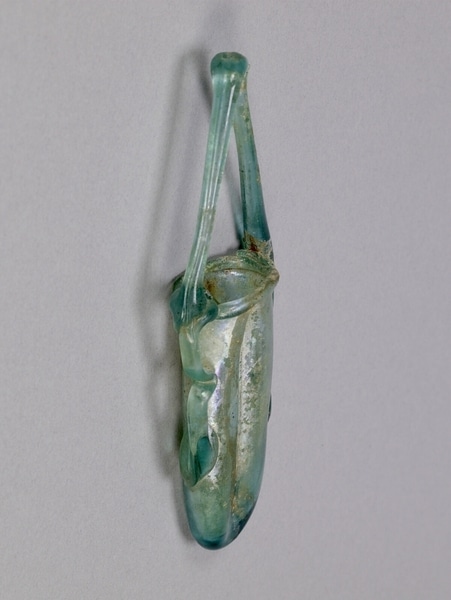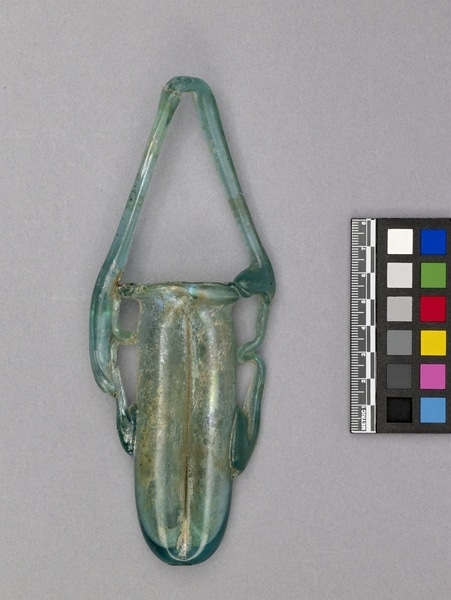Bottle Item Number: Ce221 from the MOA: University of British Columbia


Description
Light green, translucent glass bottle. The bottle is double-chambered and tear-shaped with an inverted v handle formed into two ornamental handles, flanking the chambers, that attach at the lip, slightly below the lip, and further down the chamber. The bottom is thick and slightly flat.
History Of Use
It would have contained cosmetics, likely perfume, with the arched handle and side loops used as suspension devices. Glass was probably brought to Italy by Phoenician traders. The Romans had a penchant for glass, appreciating its ability to be both decorative and practical. The Egyptian craftsmen working near the eastern Mediterranean used casting and cold-cutting to produce the limited range of glassware. Glass blowing was developed in the Syro-Palestinian region during the first century B.C.E. and was most likely brought to Rome after the region was annexed to the Roman world in 64 B.C.E. This new technology, quick and versatile, revolutionized the glass industry stimulating the fascinating changes in the range of shapes and designs.
Narrative
It is believed to have been excavated at St. George's Cathedral in Jerusalem in 1927.
Specific Techniques
The body was formed by blowing a glass bubble, pinching it at the centre and then folding it together.
Item History
- Made in Italy between 300 and 399
- Collected during 1927
- Owned by T. W. A. Gray before March 27, 1979
- Received from T. W. A. Gray (Donor) on March 27, 1979
What
Who
- Culture
- Roman
- Previous Owner
- T. W. A. Gray
- Received from
- T. W. A. Gray (Donor)
Where
- Holding Institution
- MOA: University of British Columbia
- Made in
- Italy
When
- Creation Date
- between 300 and 399
- Collection Date
- during 1927
- Ownership Date
- before March 27, 1979
- Acquisition Date
- on March 27, 1979
Other
- Condition
- fair
- Current Location
- Case 96
- Accession Number
- 0520/0003